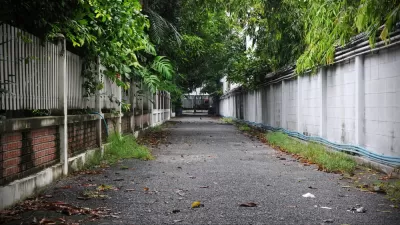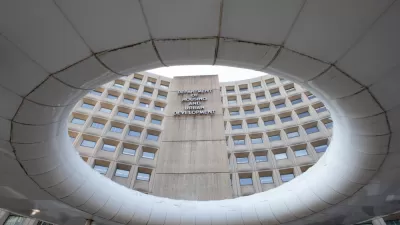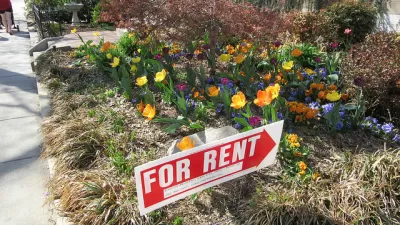A new HUD survey could help change the way the federal government defines the "suburban"—a notoriously tricky proposition.

The U.S. Department of Housing and Urban Development's 2017 American Housing Survey (AHS) included a question about whether respondents consider their neighborhoods to be urban, suburban, or rural, hoping to shed more light on one of the toughest questions in planning and development: What's a suburb, exactly?
According to a webpage hosted by the Office and Policy Development and Research, "HUD obtained responses to the neighborhood description question from nearly 76,000 households, including approximately 2,150 households in each of 25 large metropolitan areas," making it the largest ever survey on this question, expanding on a previous effort by Trulia. (The Pew Research Center has also undertaken a similar survey effort.)
The webpage sharing the new survey data also offers insights into why the motivations behind the survey, and one is a telling revelation about the disconnect between public policy on issues of land use and development compared to the realities of community for most Americans. "HUD wanted to understand the extent to which existing federal definitions of urban and rural obscure the stylized fact that half of Americans live in a suburban setting." HUD's effort to reveal the way federal definitions obscure the realities of American development patterns could inform reform in the next generation of federal definitions.
"To date, HUD has published two products from this data. First, HUD created a series of summary tables summarizing some basic results. Second, HUD and coauthors created the Urbanization Perceptions Small Area Index, which classified each census tract as urban, suburban, or rural based on the 2017 AHS data."
FULL STORY: 2017 AHS Neighborhood Description Survey

Study: Maui’s Plan to Convert Vacation Rentals to Long-Term Housing Could Cause Nearly $1 Billion Economic Loss
The plan would reduce visitor accommodation by 25,% resulting in 1,900 jobs lost.

North Texas Transit Leaders Tout Benefits of TOD for Growing Region
At a summit focused on transit-oriented development, policymakers discussed how North Texas’ expanded light rail system can serve as a tool for economic growth.

Using Old Oil and Gas Wells for Green Energy Storage
Penn State researchers have found that repurposing abandoned oil and gas wells for geothermal-assisted compressed-air energy storage can boost efficiency, reduce environmental risks, and support clean energy and job transitions.

Private Donations Propel Early Restoration of Palisades Playground
Los Angeles has secured over $1.3 million in private funding to restore the Pacific Palisades playground months ahead of schedule, creating a modern, accessible space that supports community healing after recent wildfires.

From Blight to Benefit: Early Results From California’s Equitable Cleanup Program
The Equitable Community Revitalization Grant (ECRG) program is reshaping brownfield redevelopment by prioritizing projects in low-income and environmental justice communities, emphasizing equity, transparency, and community benefits.

Planting Relief: Tackling Las Vegas Heat One Tree at a Time
Nevada Plants, a Las Vegas-based nonprofit, is combating the city’s extreme urban heat by giving away trees to residents in underserved neighborhoods, promoting shade, sustainability, and community health.
Urban Design for Planners 1: Software Tools
This six-course series explores essential urban design concepts using open source software and equips planners with the tools they need to participate fully in the urban design process.
Planning for Universal Design
Learn the tools for implementing Universal Design in planning regulations.
Ascent Environmental
Borough of Carlisle
Institute for Housing and Urban Development Studies (IHS)
City of Grandview
Harvard GSD Executive Education
Toledo-Lucas County Plan Commissions
Salt Lake City
NYU Wagner Graduate School of Public Service





























